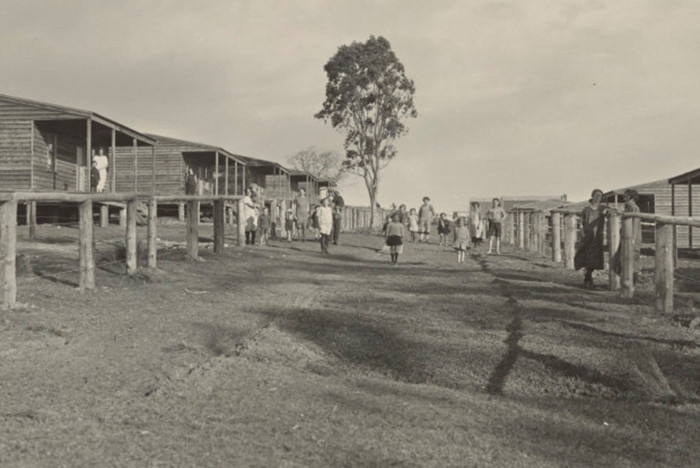South Coast NSW History Story
GRANITE TOWN
Granite Town
Granite Town, on the northern bank of the Moruya River, was built in 1924 by Dorman Long & Co. to provide accommodation to the 250 workers and their families who were engaged to quarry and shape granite for facings of the pylons and the approaches to the Sydney Harbour Bridge that was being constructed by the company at the time.
The decision to utilise granite from the Moruya area for this project had been made on simple economic grounds: vast quantities could (relatively cheaply) be transported direct from the riverside quarry to the construction sites for the bridge on both sides of Sydney Harbour. Three shallow-draught ships, each capable of carrying 400 tons, were constructed by Dorman Long & Co. to transport this granite – the Dorlonco, which was later renamed the Sir Dudley de Clair after the NSW Governor, the Sir Hugh Bell and the Sir Arthur Dorman. And, Dorman Long & Co. were also given free access to the quarry and the adjacent Granite Town site, which was Crown land.
Skilled quarry workers and stonemasons were (in a practice later adopted by the Snowy Mountains Scheme) recruited from overseas. Thirteen nationalities were represented, although most came from Scotland or Italy. And, of course, they needed to be accommodated.
The Australian historian Professor Peter Spearritt observed that ‘in the best traditions of corporate paternalism, the company provided the wooden cottages for the 250 workers and their families, along with a village store, post office and social hall. The Education Department was to provide a school, and the settlement earned the name of ‘Granite Town’’.
At its peak, the town comprised 72 four-room cottages (every two adjacent cottages shared a separate, adjoining bathroom and laundry), a bachelors’ quarters, the school and hall, a co-op store, and a post office. The stonemasons of the town built themselves a swimming pool (the Moruya Examiner reporting in January 1927 that ‘our friends from chilly Scotland frequently take advantage of the pool, to gain respite from the Australian sun. On hot afternoons the pool is taxed to its utmost capacity, old and young alike revelling in its coolness,’) and the town had their own tennis and cricket teams. (Bob Simpson, later the Australian cricket captain, was born at Granite Town. His father was a stonemason.)
Electricity was supplied to both the quarry and the town by two generators – years before Moruya township was to receive (in August 1931) its electricity supply.
Locally, Granite Town was viewed as a potential ‘Garden City’ – to become something like Port Sunlight near Liverpool in England that had been built by Lord Leverhulme to provide housing to workers in his soap factory. There were hopes that the Moruya Quarry would have a life far beyond that of supplying granite for the Sydney Harbour Bridge, with Dr J.C.C. Bradfield, the engineer and planner who oversaw the construction of the Sydney Harbour Bridge, once suggesting ‘there is enough granite at Moruya for all the building likely to be done in Sydney for many centuries.’
But by the time the Sydney Harbour Bridge was completed, and there was no longer a need for Moruya granite for that project, the Great Depression had bitten. As a result, the demand for granite from governments or builders simply evaporated.
So, around 1932, Granite Town disappeared, just as rapidly as it had emerged.
The houses and other buildings were sold off and were removed. The workforce and their families dispersed. It is thought most stayed in Australia, but others returned to the U.K. with Dorman Long and Co. having committed to paying return shipping fares for anyone who came out from the U.K. to work in the quarry.
Granite Town was probably the first purpose-built multi-ethnic settlement in Australia. Its residents had a home and job security, something that was rare in rural Australia at the time. And the quarry helped shield Moruya from the worst effects of the Great Depression.
